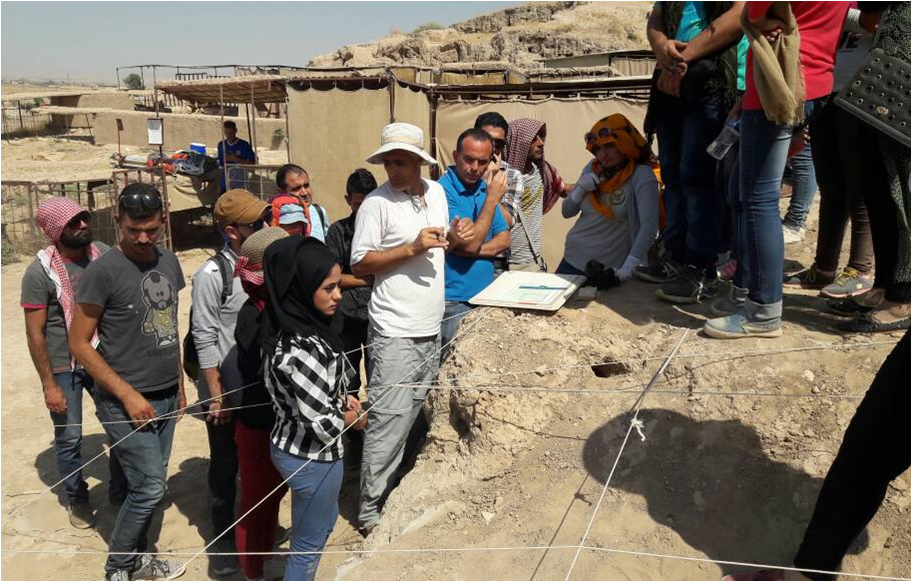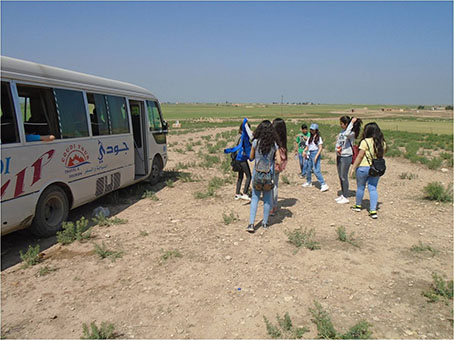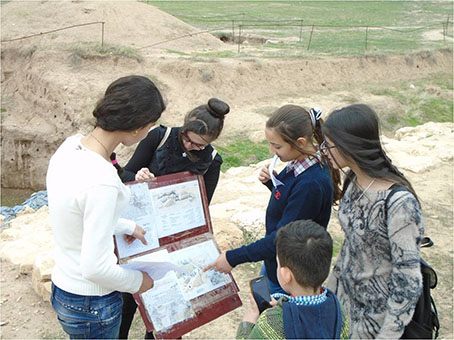





Cultural Heritage involves a wide spectrum, working from an individual level to community and beyond to the wider society, as well as on a scholarly level. On an individual level, one of the most important aspects of cultural heritage is a commonality of perception – not only visual, but including sound, smell and touch as well. The ancients constructed their material world based on interactions; these interactions can still be studied today, because the experiential frame of reference is the same. To provide a modern visitor the chance to experience ancient architecture speaks to a ‘shared’ experience. This also speaks to the debate on authenticity vs. ‘pastness’ - the experience is shared only when the environment comes directly from the archaeological record. My own work in Mozan has focused on aspects of perception in an excavation environment in the area of the temple terrace (see my article “The Monumental Temple Terrace at Urkesh and its Setting” submitted with this application) as well as the AP Palace, where the conservation program included aspects of visibility.
Cultural Heritage also speaks to the community in which an archaeological field project is embedded. The concept of stakeholders has particular meaning within the Tell Mozan project. Over the many years in the field, I have given dozens of lectures to the local workmen, which were regularly conducted on a weekly basis. This constant interaction, over years, helped build stakeholders. Further lectures I gave in whole or in part were to local schoolchildren, association members (such as architects), local municipal workers and of course visitors, whether tourists or dignitaries. This interaction with local communities has given an immense strength and resilience to the Mozan project, as it became evident in the last five years, since archaeological fieldwork became impossible. Despite the difficulties facing the area, the project continues to employ six local staff whom I am supervising through various intermediate channels; they document (using digital photography) changing conditions at the site, record pottery lots from earlier seasons, digitize old records and maintain the conservation structures. This great success is also due to the sense of pride that the local community has in the site, where those people who came to know the site while being excavated (mayors, water departments, cultural centers in addition to local residents) are now those defending it.
Cultural Heritage has also an impact on a wider level. The current conflict in Syria has seen targeted destruction in many museums and cultural sites – this is not an example of random violence, nor is it done to ‘spite’ western sensibilities. Instead, the destruction of cultural heritage is an attempt to remold national (or regional) identity by destroying select material elements of the past. By choosing what to destroy and what to keep, pretenders to political power bring to the fore those traditions which benefit them in a two-way legitimization process. Rather ironically, one of the first examples of such an attempt at legitimization can be found in one of the traditions at risk today in the ISIS controlled territories – the King of Shekna, Shamshi-Addu, conquers a large swath of Mesopotamia in the early part of the second millennium BC, founding what is known today as the Paleo-Assyrian empire. In an attempt to legitimize his claim to the newly-conquered city of Assur, he has his scribes write a list of kings showing his hereditary claim to the throne. This king-list is as clearly fictitious today as it would have been to Shamshi-Addu’s peers. Such ties between the past and the present show both continuity in questions of political legitimization as well as the importance of understanding the past as formative for the present.
There is an inherent risk in the presence of foreign scholars working with communities and contributing to elements which form a social identity – colonialism. As archaeologists, we are called to ‘stage the past’ in a myriad of ways, from a scholarly article to interviews given on television. And since the ‘stage’ and the ‘play’ (to continue the metaphor) are intrinsically intertwined on several different levels, the message received by an audience may be ‘charged’ in a way that its author never intended. The strength of studies focused on Heritage and Politics of the Past is that these levels of interplay between the past and the present become a subject of scrutiny, better enabling all archaeologists to craft their message in order to better communicate to their audience. Further, cultural heritage studies can aid us in being better archaeologists in that the conceptual framework developed for the modern world can also aid us in understanding the past; such an effort should be intrinsic to the discipline, but is often sidelined to the detriment of the field. By abiding by these principles, I feel that a live concern for cultural heritage has contributed not only to the awareness of the stakeholders for their past, but to the archaeology as well. The Mozan project has been recognized for these qualities, and I feel that when, hopefully, I am able to resume my work at the site I will continue to blend the two aspects and develop the project further to make even more responsive to these critical needs.
In May of 2014 I gave a paper with the title “A Stakeholder Success Story: The Eco-Archaeological Park at Tell Mozan, Syria” in the Culture Under Threat: The Future of the Hague Convention Conference jointly organized by the WAC Inter-Congress, Blue Shield, Newcastle University, and American University in Rome. This gave me the opportunity to meet several people in the field, in particular P. Stone and P. Gerstenblith. My contribution was based on my extensive work at Tell Mozan during the last few years during the crisis in Syria, and included aspects of ethics and safeguards for cultural heritage which were missing in Syria and might aid other countries to avoid some of the same problems. As the only speaker presenting material from an archaeological excavation, the example of Tell Mozan was quite useful in the following discussions on the formulation of a WAC statement regarding cultural heritage. I have also participated in UNESCO organized meetings such as the “Follow-up to the implementation of the UNESCO Action Plan for the Emergency Safeguarding of Syria’s Cultural Heritage” held in Berlin (June 2016).